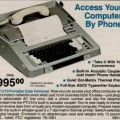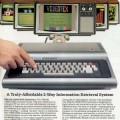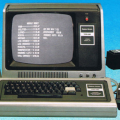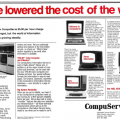FidoNet
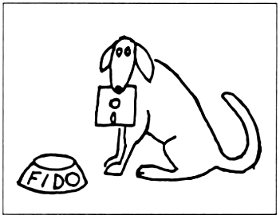
The original FidoNet logo taken from the August 27, 1984 issue of InfoWorld
Tom Jennings created FidoNet in 1984 as part of his Fido BBS. At the time, bulletin board systems only allowed a user to send messages to another user on the same system. FidoNet identified each system by node and provided a way to send a message to any remote system that was part of FidoNet. Jennings later described it as a “store-and-forward emailing and file-transmission system.” This was later extended to support more than messages, including file transfers. For example, the SouthSide BBS accepted requests for TRSLINK magazine issues at FidoNet node 231/30.
Although the Fido BBS software ran only on the IBM PC, the authors of BBS software on other computers soon added FidoNet support. The Zeta BBS, created by Nick Andrew on his System 80 (a TRS-80 Model I compatible) was the first non-IBM PC BBS to join FidoNet in September 1985.
Echomail Conferences
One of the most popular features of FidoNet was its Echomail conferences. An Echomail conference, also known as an echo, collected public messages and made them available to any FidoNet system. In some ways, the conference resembled a modern mailing list or forum. Some of the notable TRS-80 related conferences included:
- TRS-MOD134, the Tandy TRS-80 National Echo, was “for the discussion of the TRS-80 Models I, III, 4x computers, related hardware, software, and TRS-Link TRS80 Magazine.”
- COCO, the Tandy Color Computer Conference, was for “discussion of COCO hardware and software, technical advice, help to new COCO users, COCO related companies, COCO Clubs, other computers as related to the COCO, the COCO in FIDONET, and anything else regarding the COCO and the promotion of the COCO community.”
- MM1_TECH, which was an “echo conference for the growing number of MM/1 users to exchange ideas, programs and help.” (The MM/1 was a computer sold as a next generation Color Computer 3.)
- MOD1000, the Tandy Model 1000 Personal Computers Users Conference, was for “the Tandy 1000 owner. Discussions include: Hardware upgrades, software compatibility and general problems encountered in the everyday use of the Tandy Computer.”
- OS9, the OS-9 Operating System conference, was a “conference for discussion of OS-9 hardware and software on the COCO and other computers, help to new users, RiBBS, multitasking, windows, and any other discussion of OS-9 and the promotion of the OS-9 community.”
At their peak, the conferences were quite popular. For example, in 1994 the COCO echo had 30 messages a day. Many of the conferences had rules of conduct. The TRS-MOD134 conference had five rules, number one being “Flames will not be tolerated.” Rule violators received two escalating warnings and then were banned from the conference.
By 1995, wider availability of the Internet led to a serious decline in bulletin board systems. Echomail conferences faced competition from Internet mailing lists and Usenet and their number of messages and users decreased. Of the TRS-80 conferences, MM1_TECH ended in October 1997, OS9 ended in January 2000, COCO ended in July 2000, and TRS-MOD134 ended in February 2001. MOD1000 lasted until 2004 but probably ended that year.
